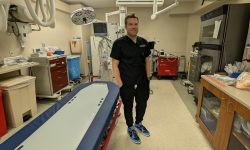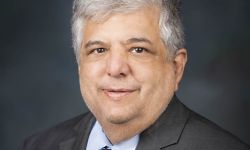Primary-care doctor shortages cut deep in Michigan's underserved areas
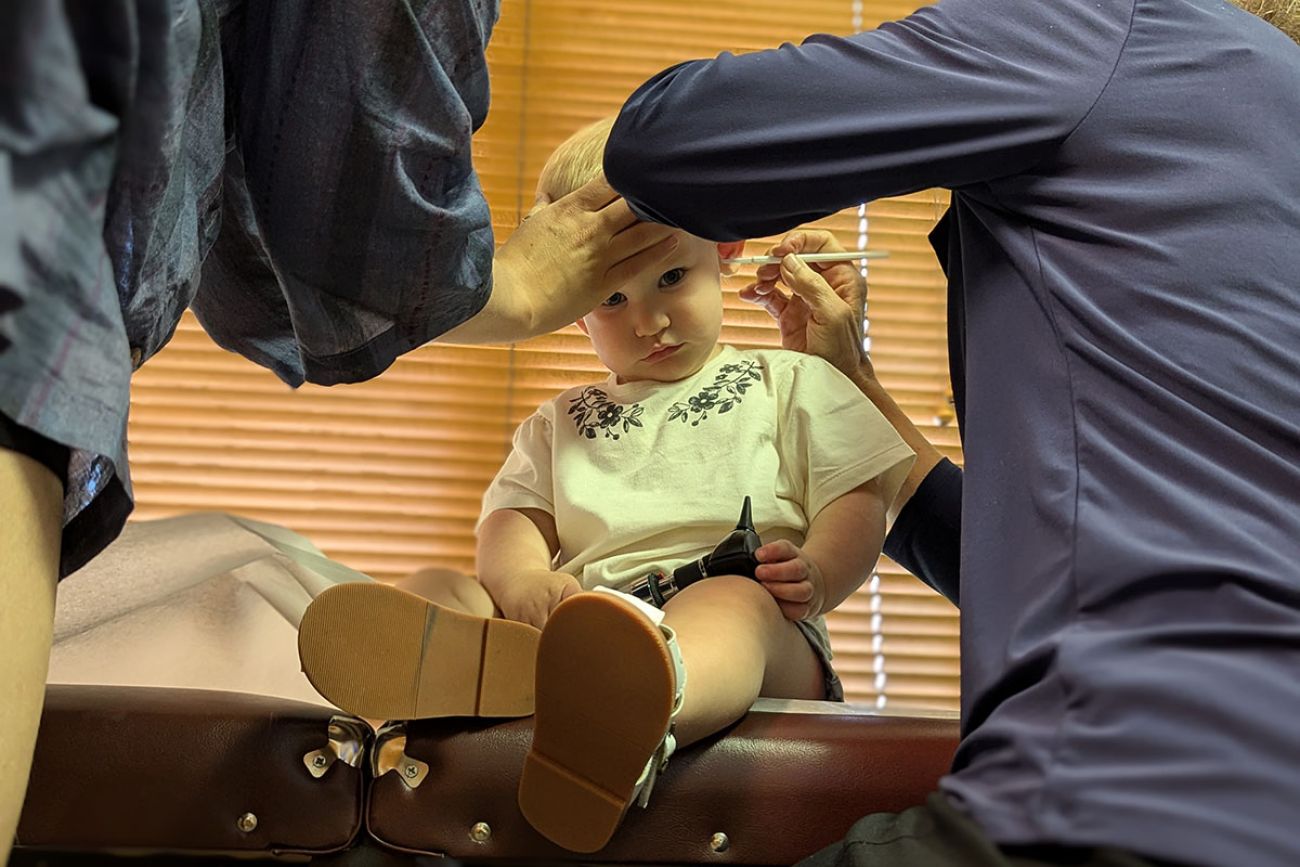
- Michigan needs hundreds more family doctors, internal medicine doctors and pediatricians to meet its current need
- The problem is likely to get worse as doctors retire and residency slots to train their replacements go unfilled
- For patients, shortages means weeks or months waiting for appointments and, at times, delayed care.
SEBEWAING — As 16-month-old Ada babbled happily to a blood pressure squeeze bulb, Emily Chumbler was talking about Michigan’s doctor shortage problem — specifically, her own.
The hint of a baby bump had begun to show on Chumbler’s slender frame, a physical reminder of her need for good medical care in the coming months. But here along the northwest edge of Michigan’s Thumb, there weren’t a lot of options for Chumbler, a Bad Axe native who had recently returned home with her husband and toddler daughter after several years in Cleveland and Detroit.
The OB-GYN offices Chumbler called told her they were already overwhelmed. Family doctors, too, she said.
Chumbler searched for a pediatrician for Ada, too. No luck.
That brought her here to Dr. Cheryl Canfield, who at 62 years old, was wrapping up her final weeks in Sebewaing to semi-retire to Midland, an hour away, where she’d work just two days a week.
Since the 1990s, Cheryl Canfield, along with her husband, Dr. Ed “Ned” Canfield, had tended to Sebewaing’s medical needs, delivering babies, performing colonoscopies and removing warts — “total care,” Cheryl Canfield said.
Already, Ned Canfield had retired. Others have left, too, leaving a growing crush of patients on the few remaining doctors in the area and those in Bay City, 40 minutes away.
“It takes time to provide quality patient care — to ask the right questions, to develop a relationship,” said Canfield, whose appointments often last an hour or more and who serves the area’s cash-pay Amish patients. Without enough doctors, “it’s a constant churn — just get them in and out in 10 minutes.”
Related:
- Michigan needs doctors more than ever. More medical schools haven’t helped
- Michigan effort puts new doctors in front of poor, underserved patients
- Delayed medical appointment? In Michigan, the problem may not be the doctor
For her part, Chumbler realized that it might be difficult to find doctors in rural Sebewaing, where the northern edge of downtown is defined by Michigan Sugar and hulking co-op elevators that last year took in 280,000 bushels of black beans, navy beans and soybeans.
“I just kind of thought I'll take what I can get doctor-wise,” she said, scooting Ada away from the blood pressure apparatus, “but then I couldn't get anyone at all.”
Too much debt, too few docs
Sebewaing is one of dozens of Michigan stretches — rural and urban — with too few doctors.
Despite the rapid expansion of Michigan medical schools since 2011, more than 1 in 4 Michiganders, or about 2.7 million, are living in these Health Professional Shortage Areas, a federal designation based on the number of providers, the portion of residents under the federal poverty level, and travel time to the nearest providers outside the designated area.
The U.S. Health Resources and Services Administration, or HRSA, estimates Michigan needs 490 primary care providers just in those areas to meet current need, according to the most recent data from HRSA.
And primary care doctors like the Canfields are some of the most critically needed.
The American Association of Medical Colleges estimates a national shortfall of between 20,200 and 40,400 primary care physicians by 2036.
Experts have told Bridge and others that daunting student debt tips the scales for a medical student considering primary care toward specializing in a higher-paid field. Of the six lowest-paid physician specialties, half are in primary care — family medicine, pediatrics and internal medicine — according to the Kaplan Test Prep which provides educational and career information for students and schools.
Salary estimates by the Medscape’s Physician Compensation Report, as quoted by the HRSA showed an even wider gap.
In contrast to plastic surgeons and orthopedic doctors, who topped the list with an average salary of $619,000 and $573,000, respectively, internal medicine doctors made less than half that in 2022 — $273,000, followed by family medicine doctors ($255,000) and pediatricians ($251,000).
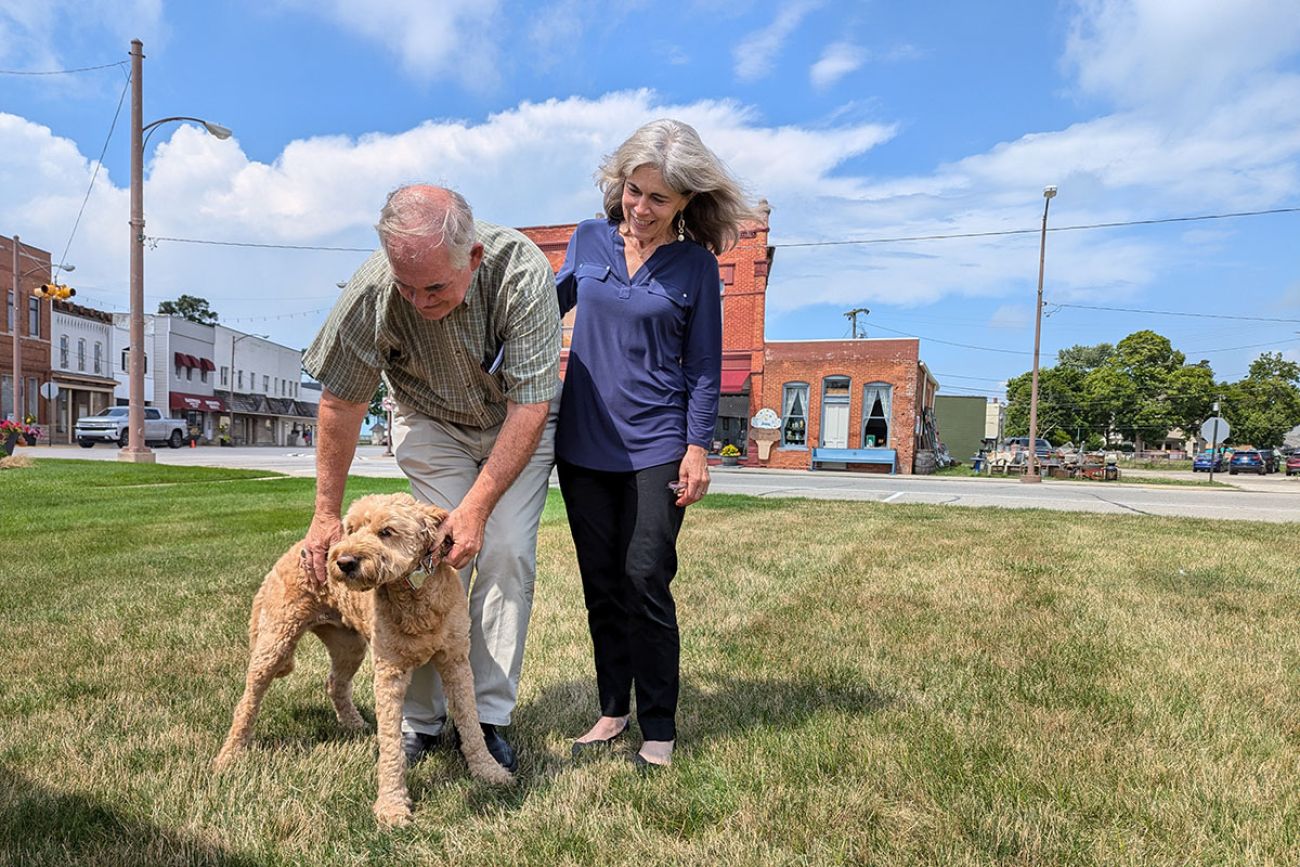
For their part, the Canfields have never regretted their choice of career and home here in Sebewaing, raising their four children in a three-story Victorian home, serving on community boards and as deputies for the medical examiner, and running into patients in the hallways of the school or in Sebewaing’s tiny downtown.
“We have delivered babies, and we have helped people die well. I’ve told people they had cancer. I’ve told people they are pregnant,” said Dr. Ned Canfield.
But, he said, the unhurried pace of a small town that they loved is not for everybody.
“The sense of community here is wonderful, but it takes a special person to appreciate that.” A small-town practice, he said, is a place “where you either are here for 30 years, or you burn out in five.”
Passion vs. paycheck
To be clear, the lack of primary care touches all parts of Michigan.
In Detroit, long-time pediatrician Dr. Herman Gray said it’s an increasingly tough sell to lure new medical students into the field, even if their passion for pediatric medicine was piqued as powerfully as his.
It was 1975, and Gray, then a third-year medical student, walked into his training rotation at Mott Children’s Hospital at the University of Michigan, where children were sickened with cancers and missing arms and legs.
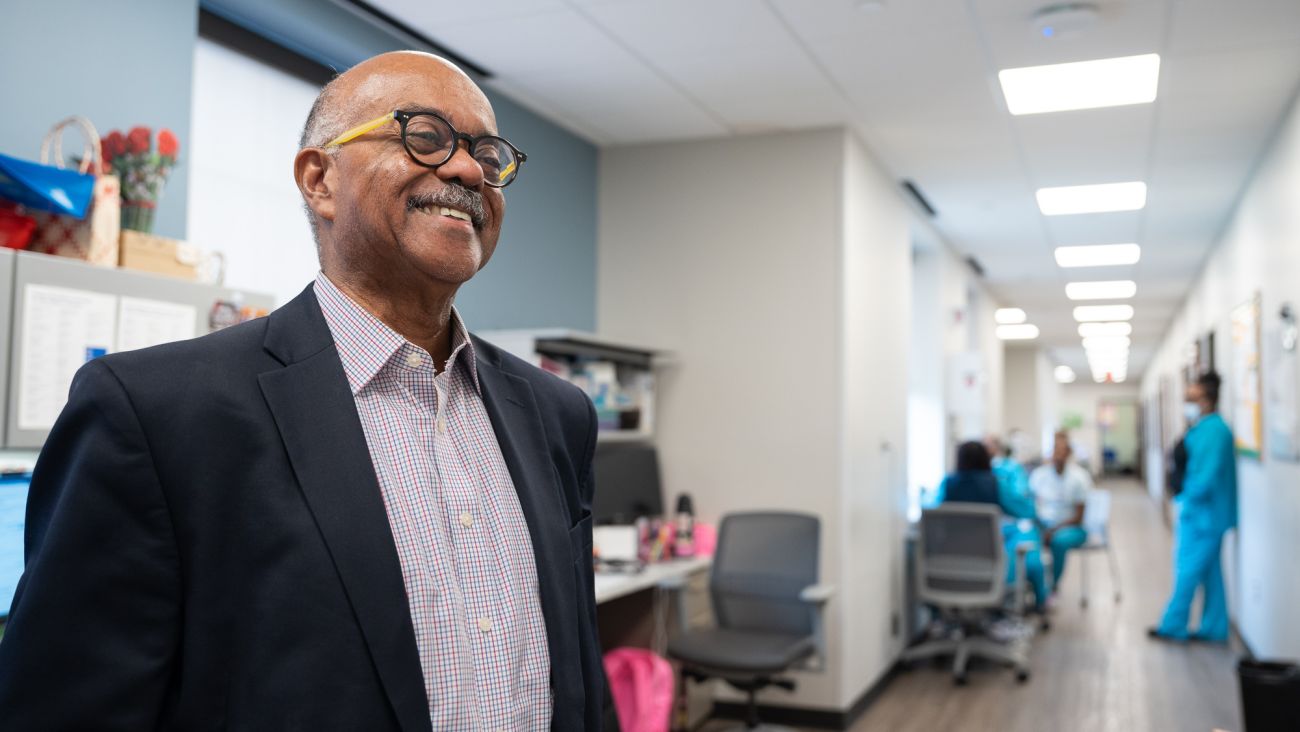
His career path toward surgery veered sharply, taking on a technicolor sheen toward pediatrics, he said.
“I tell people it was like the ‘Wizard of Oz’ movie. The first part of the movie’s in Kansas, and it's in black and white, and it's drab,” he said. “And then I arrived at Oz, and there's these little munchkins running around everywhere, and they're singing and dancing and happy, even though they're sick and in the hospital.” he said.
He chuckled recently at the memory of tiny smiles and outsized energy: “I'm like, ‘Okay, I am hooked. This is what I am going to do.’”
But that was long before the average student debt soared to $200,000 for medical school, said Gray, now the chair of the pediatrics department at Wayne State University School of Medicine.
It’s an understandably outsized variable in making career choices, he said.
“A student can have that experience now and then the next step will be, ‘But I wonder how I'm going to pay off my debt?’”
Medical school debt may be one of the reasons that 18 primary care residency slots originally went unfilled throughout McLaren Health Care’s hospitals, mirroring a national struggle to find pediatricians and primary care doctors.
For its part, the Grand Blanc health system is trying a new tack for wooing primary care doctors, especially to rural Michigan.
Residents in the three-year McLaren Family Medicine Rural Training Program begin their training, in part, with pediatric patients at Hurley Hospital in Flint. But they spend the final two years at McLaren’s hospital in northern Michigan’s Petoskey — in an area quintessentially Michigan with its scenic waterfronts, quaint shopping districts and outdoor recreation.
‘...They train here, they stay here’
Residents train with the local tribes and they provide care on the surrounding islands — Beaver and Mackinac among them.
“We train them in that level of medicine where you're the guy who puts on the splint and does the injection and distributes the meds,” said Erin Reis, McLaren’s associate chief academic officer.
Whether it's this residency program or others, McLaren is especially interested in home-grown doctors — those who grew up here and can be convinced to stay, she said.
“Statistically, if they go to school here and they train here, they stay here in practice,” she said.
But, she acknowledged, student debt continues to be a factor in career choices — not only in specialties, but where students will go to practice.
There’s simply no getting around that, she and others said.
One student, she said, recently revealed $550,000 in student debt before they arrived at McLaren.
And while that’s an anomaly, it’s not unusual, she said, for students to “have a lot of life ahead of them, and they’re paying $5,000 a month in student loans.”
Since 2019 Michigan has tried to boost doctors in underserved areas through MIDOCs, a state-funded residency program that also offers up to $150,000 in loan repayment in exchange for a commitment to work in those areas, and the Michigan State Loan Repayment Program, which offers up to $300,000 for a commitment to work in an underserved area.
The goal for MIDOCs is to build residency programs in underserved areas and, in turn, encourage those new doctors to put down roots in those communities, said Jerry Kooiman, the assistant dean for Michigan State University College of Human Medicine.
After all, it’s a time in life when many start families or forge career friendships.
“The longer they stay in the community, the more likely that they're going to actually practice (there),” Kooiman said.
It’s too early to tell whether MIDOCs will have long-term impact in Michigan.
At least one study, published in the journal Health Affairs, suggests such programs are moderately helpful, at best.
Despite decades of incentives designed to draw new doctors to federally designated shortage areas, nearly 3 in 4 of those U.S. counties remained underserved a decade later. Moreover, mortality — a barometer of sorts for community health — remained unchanged, too.
That’s likely a reflection of the complex challenges in luring young doctors to rural areas, said researcher Justin Markowski, who conducted the work as a doctoral student at Yale University’s health policy and management department.
First and foremost is the same reason other college grads tend to flock to more metropolitan areas: A rural community’s metabolism is just too slow, too quiet compared to a city’s social life and cultural offerings. Additionally, patient needs in underserved areas tend to be more complex — made so by “social health challenges and just years and years not being treated,” Markowski said.
And if it’s difficult to attract doctors, it’s difficult to recruit the necessary support staff for a doctor — nurse practitioners or physician assistants, registered nurses and medical assistants — the researcher Markowski said.
MSU’s Kooiman acknowledges there’s no guarantee that new doctors will stay in an area once they’ve fulfilled their obligations: “It doesn't always happen this way,” he said.
Still, the MSU medical school has trained four new psychiatry residents in the Upper Peninsula, and all have remained there, he said.
“MIDOCs is a great program. I'm proud of the success. But it's not big enough yet that it really is moving the needle”
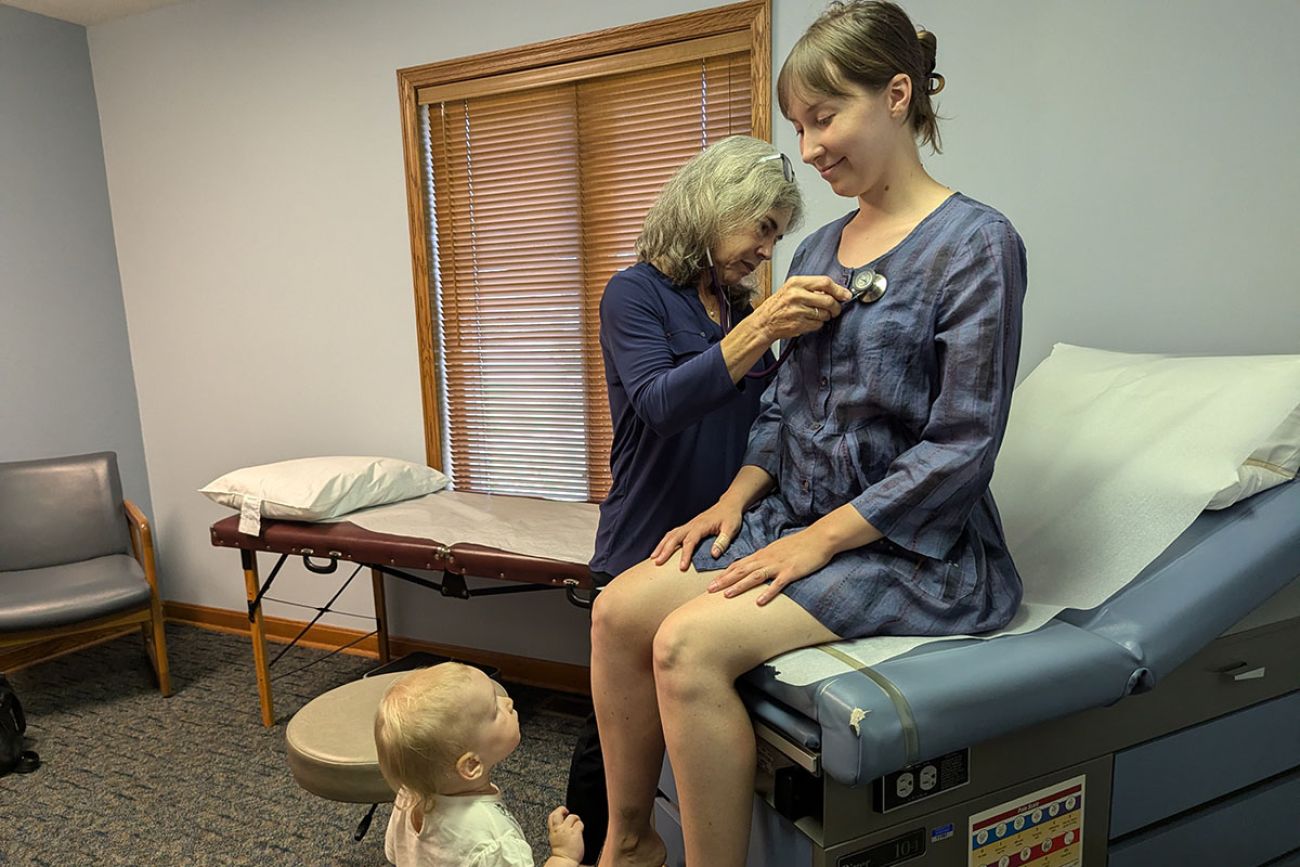
Limited options for patients
In Sebewaing, Chumbler is 26 weeks pregnant, and the stay-at-home mom plans to give birth with the help of a midwife, after a cousin’s suggestion.
It’s not that Chumbler, now 32, minds using a midwife for her January delivery date: “I’ve always wanted a home birth,” she said.
It’s just that she wished she had a choice. But she said, that’s the trade-off for now in Michigan’s rural stretches. She’ll now drive about 80 minutes to see Dr. Cheryl Canfield at her new practice in Midland, both for her care and for Ada’s.
Young and generally healthy, Chumbley said convenience in medical care is secondary to more important things for now: “Being near family here, the lower costs of living here — it’s what we enjoy.”
See what new members are saying about why they donated to Bridge Michigan:
- “In order for this information to be accurate and unbiased it must be underwritten by its readers, not by special interests.” - Larry S.
- “Not many other media sources report on the topics Bridge does.” - Susan B.
- “Your journalism is outstanding and rare these days.” - Mark S.
If you want to ensure the future of nonpartisan, nonprofit Michigan journalism, please become a member today. You, too, will be asked why you donated and maybe we'll feature your quote next time!


